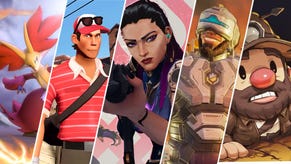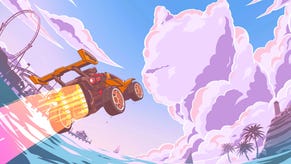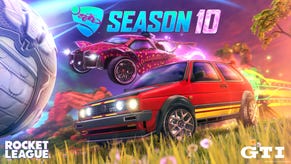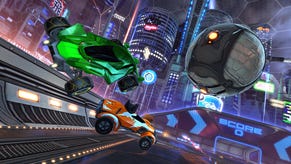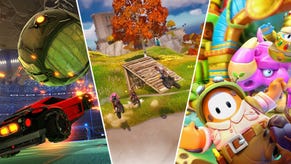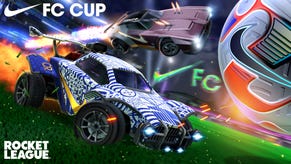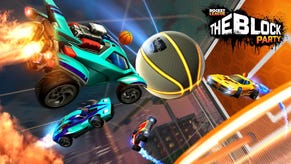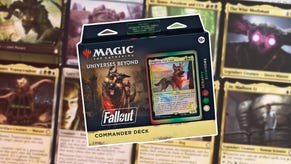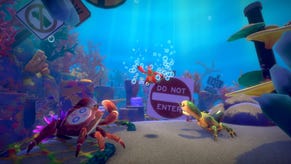Rocket League: How Last Year's Surprise Hit Changed Psyonix, and What's Next for 2016
Psyonix CEO and design director Dave Hagewood talks about the rise of 2015's breakout hit, and what we should look forward to in the new year.
This article first appeared on USgamer, a partner publication of VG247. Some content, such as this article, has been migrated to VG247 for posterity after USgamer's closure - but it has not been edited or further vetted by the VG247 team.
A little less than six months ago, the small development team at Psyonix watched in amazement as Rocket League became a runaway hit. They had hoped it would catch on, but what followed surpassed their wildest expectations.
"I think we made the entire development budget within 48 hours of release," Psyonix CEO and design director Dave Hagewood told me when I spoke to him recently. "I think we were all pinching ourselves a little bit, but I remember it was pretty much our internal chat rooms were just constantly posting one article after the next article after Reddit posts, and just all this stuff that was coming in, and it was such an amazing time."
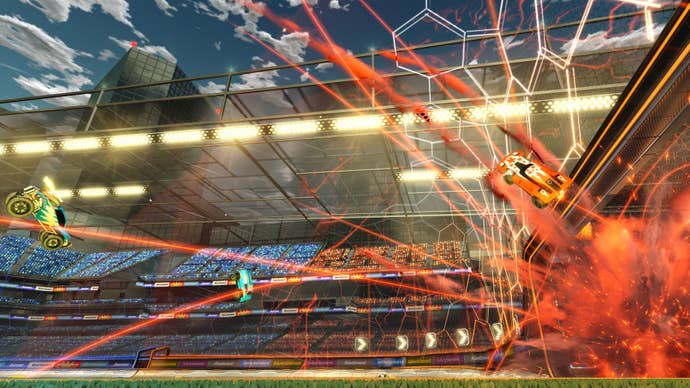
Fast forward to July, and Psyonix is preparing to put a bow on the first full season of competitive play. On Friday they revealed that players will receive limited edition crowns depending on their rank when the season ends, which can then be worn as a Topper on their car's roof. Psyonix will also be introducing item qualities, with orange for limited items from promotional events and green for items acquired from paid DLC.
It seems appropriate that Rocket League should introduce crowns in the wake of what has been a transformative year for Psyonix - one that saw them grow substantially while earning numerous awards. Though still very much an independent studio, Psyonix's staff has grown to roughly 50, with many of the new hires being support staff brought in to maintain Rocket League's infrastructure.
"We had to build [a support staff]; and in a relatively short amount of time, we almost had to become a publisher in a way. So we had to hire up a lot of people that are not the traditional kind of developers here. Most of our studio is – or has been in the past – solid developers. You're either an artist or a programmer or possibly a producer, but we didn't have a lot of community managers, we didn't have marketing people and things like that, so we had to really enhance that. We've had to make a lot of interesting hires on that front, and it's brought an interesting dynamic to the studio to have that side of us now."
While not exactly what you would call growing pains, it has been a period of transition for a studio that was mostly unknown before last year. Since being founded in 2000, their releases have included ARC Squadron and the Rocket League precursor Supersonic Acrobatic Rocket-Powered Battle Cars - games that received positive reviews but otherwise flew under the radar. In industry circles, they were were better-known for their quiet contributions to Gears of War, Homefront and XCOM: Enemy Unknown, where they served as a hired gun for better-known studios.

With Supersonic Acrobatic Rocket-Powered Battle Cars, Hagewood says they knew they had a potential hit on their hands. It was just a matter of getting the game in front of people. The first order of business was changing the name to the much more manageable "Rocket League," which was both more memorable and rolled off the tongue better ("They could never pronounce the title, which was one of the reasons we changed it," Hagewood laughs). The second was taking advantage of digital distribution. In the seven years since Supersonix Acrobatic Rocket-Powered Battle Cars, online distribution had blossomed, and it was perfect for a game like Rocket League. With the help of models like Sony's Instant Game Collection, Psyonix figured that Rocket League could be a hit. They just didn't anticipate how big of a hit it would end up being.
Rocket League's servers ended up being slammed from the first day of launch with curious PlayStation 4 owners looking for something new to play. Psyonix scrambled to respond; and while they were able to eventually stabilize the servers, they still faced the question of what to do next. Soon, they were laying down plans for DLC and an eSports debut, all while staffing up as fast as possible.
Within a month, Psyonix put out Supersonic Fury - a DLC pack feature new cars and paint options, which was followed by additional vehicles and cosmetics in October. The first major gameplay update, meanwhile, introduced mutaters, which made it possible to set the match to low gravity mode, or use a cubed ball. Psyonix also evenutally introduced an ice hockey mode, which changed the arena into an ice rink.
Psyonix had always intended to introduce mutaters, but they initially held off in order to focus on the competitive side of the game. "You have to have a solid, established set of standard rules for you to build an eSport around and leagues around, and what is the true game that people are playing. But at the same time, the vast majority of players are your spectators; they're the people you hope will watch eSports, but they want to play at home, they want to have fun, and they want to mix it up, and they want to get the most fun from the game possible. So we wanted to add those in, but we wanted to do so after we had definitely established what the core gameplay was."
While Psyonix doesn't want to accidentally cook their golden goose, it's safe to say that they will go on on tinkering with their formula. In December, they released Wasteland, which is much larger than the standard map; and while it isn't available in ranked play yet, it may eventually make it there, with more maps to follow. Psyonix has grown and changed a great deal over the past few months, but their experimental side remains very much intact.


